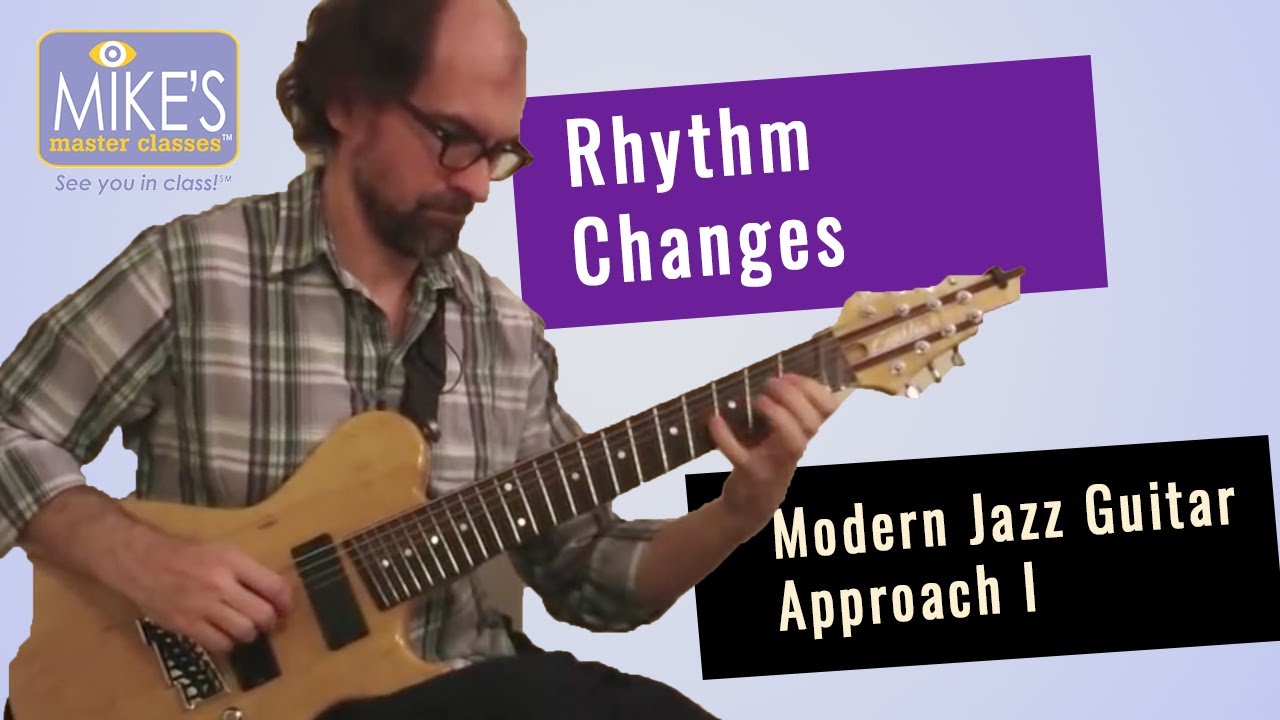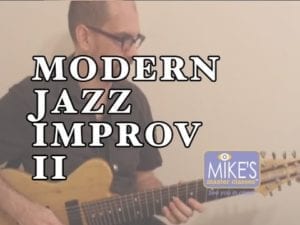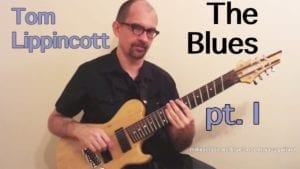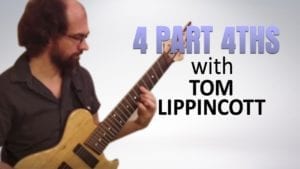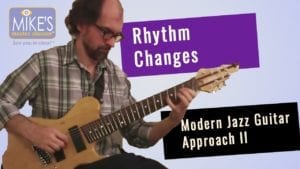Description
desc
Rhythm Changes – Modern Jazz Guitar Approach – Part I Class Content | Tom Lippincott
After the blues, probably the most played and most essential chord progression/song form in jazz is the famous “rhythm changes.” This chord progression, originally derived from George and Ira Gershwin’s classic “I Got Rhythm,” written in 1930, has been performed or recorded by countless jazz musicians.
The simple elegance of the song’s architecture became a favorite vehicle for improvisation and inspired many musicians to build their own compositions with all new melodies around the borrowed chord structure. At the same time, and especially during the bebop era in the 1940s, harmonic variations were woven into the song’s basic form.
Because of its historical significance and classification as a standard, any aspiring jazz musician will need to be familiar with rhythm changes and should work toward mastering its many variations.
Rhythm changes is considered to be something of a proving ground for young up-and-coming players due to the harmonic complexity of many of the versions and the fast tempo at which the form is often played. A new generation of musicians has reinvigorated jazz with fresh and innovative sounds and approaches, but rhythm changes continues to be an essential part of the modern style.
If you are interested in learning rhythm changes in a complete, logical, and thorough manner, incorporating modern elements while still maintaining a thread of the tradition when you play over the form, or gaining proficiency with playing this progression or others at up-tempos, then this class is for you.
In this class, the rhythm changes form will be explored in detail with the goal of applying modern jazz melodic, harmonic, and rhythmic vocabulary to the progression. First will be a brief survey of the structure and history of the form along with exercises for gaining mastery over the basic harmonies. Then, common mainstream approaches for melodic and harmonic variations on the progression will be outlined. Finally, modern approaches to melody, harmony, and rhythm will be applied to the rhythm changes progression.
Rhythm changes: A Modern Jazz Guitar Approach – Part I covers:
- A brief history of rhythm changes and its importance in jazz
- Basic rhythm changes progression defined and analyzed, including harmonic function analysis and discussion
- Typical bebop style harmonic variations on rhythm changes defined and analyzed, including harmonic function chart
- Tri-tone substitution
- Melodic minor mode substitution, including the use of augmented major seven and minor major seven arpeggios and chords for implying melodic minor sound
- Detailed chord/scale analysis for three different variations of the A section
- Arpeggio and scale studies for rhythm changes, including typical substitute sounds, with emphasis on fingerboard mastery and voice leading
- Discussion of guide tones, approach notes, and target notes with examples, including excerpts from several master improvisors’ solos
- Discussion of “the big three progressions” and using them interchangeably for substitute sounds, with multiple examples
- Discussion of other typical bebop devices such as chromatically descending minor seventh chord, “Ladybird,” and cycle of dominant substitutions
- Diminished scale use for both diminished and dominant sounds
- Discussion of simplifying the harmony on the A sections using such devices as blues, I diminished, diminished dominant, and altered dominant sounds
- Discussion of soloing on the bridge or middle section including the use of typical bebop vocabulary, as well as diminished dominant, altered dominant, and lydian dominant sounds
- Extensive discussion on playing at fast tempos, including various suggestions and exercises, as well as a transcribed solo of Tom’s improvisation with a step-by-step analysis of the improvisor’s thought process while soloing
- Running time: 138 minutes
- 23 pages of written examples (including chord diagrams, standard notation, and TAB), exercises, and example solos with close-up views of the performances
- Each example performance is titled and numbered for easy navigation
- 40 MP3 backing tracks for written examples and solos
| Rhythm Changes - Modern Jazz Guitar Approach - Part I | |||
| Rhythm Changes – Modern Jazz Guitar Approach – Part I | 02:18:00 | ||

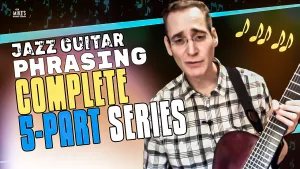 Jazz Phrasing (All Instruments) - Complete [5-part series] | Steve Herberman
Jazz Phrasing (All Instruments) - Complete [5-part series] | Steve Herberman 